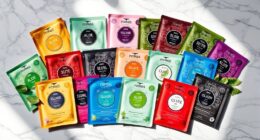Understanding fabric types like silk, cotton, and linen helps you choose the right material for your needs. Silk offers elegant, delicate luxury but requires gentle care. Cotton is versatile, breathable, and easy to maintain, making it perfect for daily wear. Linen keeps you cool with its moisture-wicking qualities, ideal for hot weather. Exploring these fabrics deeper reveals how their unique features impact comfort, care, and sustainability—if you want to uncover the details, there’s more to learn.
Key Takeaways
- Silk is a delicate, luxurious fabric produced by silkworms, requiring gentle care like hand washing or dry cleaning.
- Cotton is breathable, versatile, and easy to care for, suitable for everyday clothing and textiles, with eco-friendly options available.
- Linen is a lightweight, moisture-wicking fabric ideal for warm weather, offering breathability, quick-drying, and durability.
- Synthetic fabrics like polyester and nylon are durable, affordable, and low-maintenance, often mimicking natural fibers.
- Understanding different fabrics helps in selecting appropriate clothing, caring for textiles properly, and making eco-conscious choices.
Silk: The Epitome of Elegance and Luxury
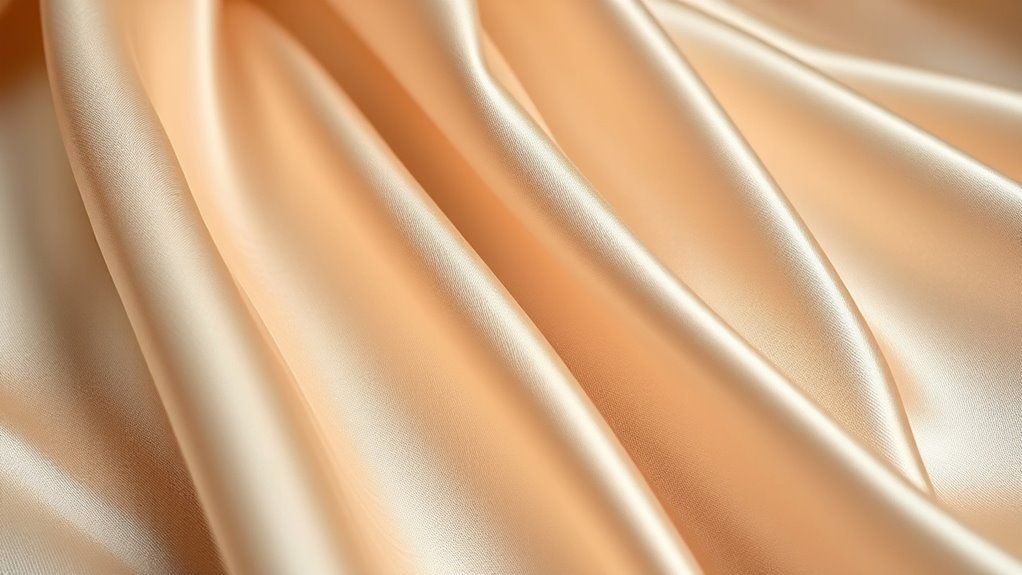
Silk has long been celebrated as the epitome of elegance and luxury, enchanting people with its smooth texture and radiant sheen. Its fiber production involves silkworms spinning cocoons, which are carefully harvested to create this exquisite fabric. Because silk is delicate, proper fabric care is essential to maintain its luster and softness. You should avoid harsh detergents and opt for gentle hand washing or dry cleaning. When washing silk, use cold water and a mild detergent, and never wring the fabric. Store it folded in a cool, dark place to prevent damage from sunlight and humidity. Additionally, understanding the fabric production process can help you better appreciate its delicate nature and the importance of proper care. By understanding silk’s fiber production and following proper fabric care, you’ll preserve its beauty and extend its lifespan, ensuring it remains a luxurious addition to your wardrobe.
Cotton: The Versatile and Breathable Classic
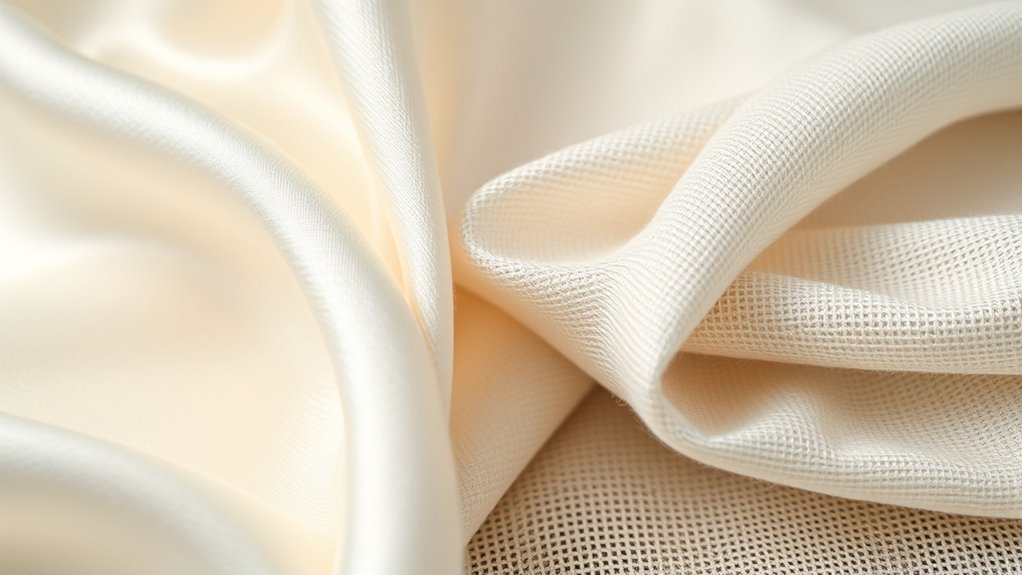
Cotton stands out as one of the most versatile and widely used fabrics, appreciated for its breathability and comfort. It’s perfect for everyday wear, from T-shirts to bed linens, because it keeps you cool and dry. To keep cotton fabrics looking their best, proper fabric care is essential—wash in cold water, avoid harsh detergents, and tumble dry on low or air dry. While cotton is renewable and biodegradable, its environmental impact depends on how it’s grown; conventional farming uses significant water, pesticides, and energy. Choosing organic cotton can help reduce this impact and promote sustainability. By understanding both fabric care and environmental considerations, you can enjoy the benefits of cotton while making eco-friendlier choices.
Linen: The Cool and Crisp Choice for Warm Weather
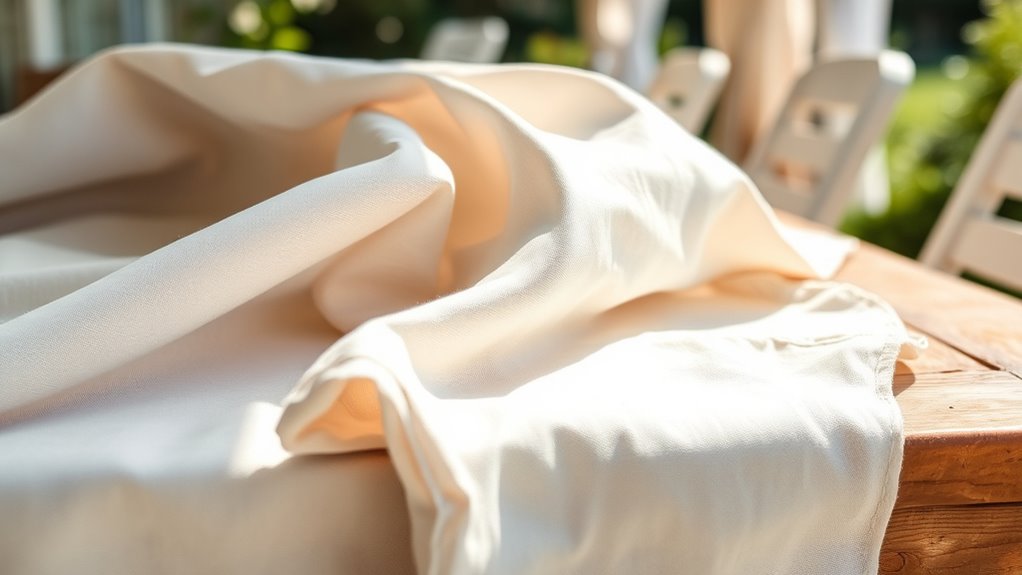
When the weather heats up, linen becomes your best ally for staying cool and comfortable. Its moisture-wicking properties draw sweat away from your skin, helping you stay dry and fresh throughout the day. Linen’s natural fiber benefits include breathability and quick-drying capabilities, making it ideal for hot, humid climates. The crisp, textured feel of linen keeps you feeling light and airy, preventing overheating. Plus, linen’s durability means your garments will last longer, even with frequent wear. Its natural fibers also resist bacteria and odors, adding to its appeal as a summer fabric. Additionally, choosing appropriate fabric types like linen can enhance your comfort and style during warm months. Whether you’re dressing up or keeping it casual, linen offers a sophisticated, breathable option that keeps you cool while looking sharp. It’s truly the perfect choice for warm weather comfort.
Other Popular Fabrics and Their Unique Qualities
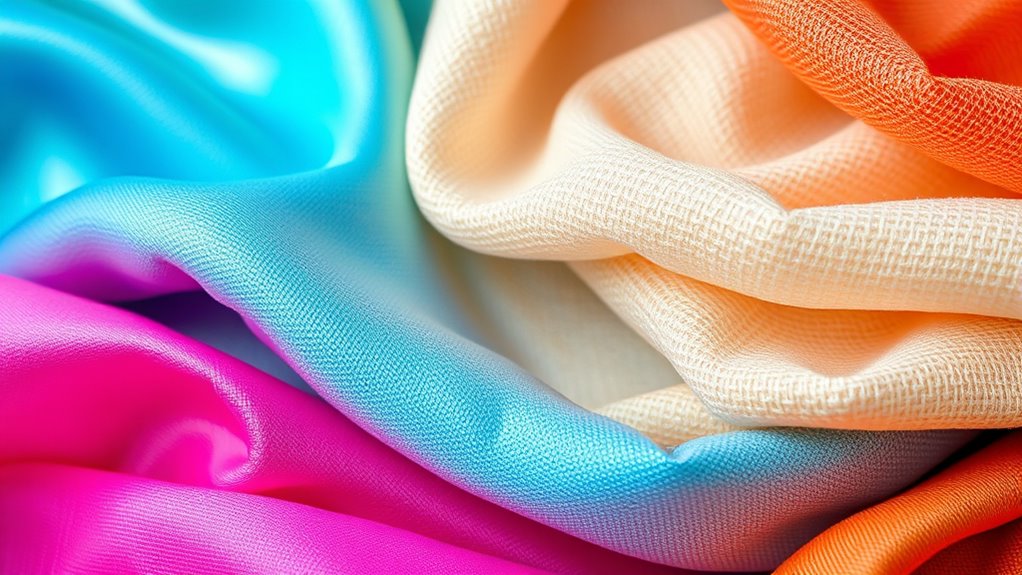
Beyond linen, a variety of fabrics offer their own distinct advantages, catering to different style preferences and functional needs. Sustainable fabrics, like hemp and organic cotton, appeal to eco-conscious consumers, reducing environmental impact. Synthetic textiles, such as polyester and nylon, are known for their durability, affordability, and ease of care, making them popular for activewear and outdoor gear. These fabrics often mimic natural fibers but can be produced more efficiently. Some fabrics like rayon and acetate blend natural and synthetic elements, offering luxurious textures with lower costs. Understanding these options helps you choose fabrics that align with your values, whether you prioritize sustainability, performance, or affordability. Each fabric type has unique qualities that can enhance your wardrobe and meet specific lifestyle demands. Additionally, advancements in digital sound synthesis enable the creation of innovative textures and effects, paralleling how diverse fabrics expand creative possibilities in fashion.
Frequently Asked Questions
How Should I Care for Delicate Silk Garments to Ensure Longevity?
To care for your delicate silk garments, always opt for gentle washing methods like hand washing with mild detergent or using a delicate cycle on your machine. Avoid harsh scrubbing or wringing. After washing, make certain proper storage by keeping silk in a cool, dry place, preferably hanging or folded carefully to prevent wrinkles. These steps help maintain the fabric’s softness, shine, and longevity.
What Are the Environmental Impacts of Producing Different Fabric Types?
Imagine choosing eco-friendly dyes for your cotton shirt, reducing chemical pollution. Different fabrics impact the environment variably; cotton requires extensive water and chemical use, while silk involves resource-heavy sericulture. Sustainable farming practices, like organic cotton, lessen environmental harm. Producing linen from flax is relatively eco-friendly. Your choices influence water use and pollution, so opting for sustainably farmed, eco-friendly dyed fabrics helps lower the environmental footprint of your wardrobe.
How Do Fabric Weaves Affect the Durability of Cotton and Linen?
You should know that fabric weave directly influences the durability of cotton and linen. A tight weave increases fabric strength, making it more resistant to wear and tear, while a loose weave may feel softer but can be less durable. By choosing a dense, well-constructed fabric weave, you guarantee your cotton or linen items last longer, maintaining their quality and appearance over time.
Can Synthetic Fabrics Mimic the Qualities of Natural Fibers Effectively?
Imagine you’re choosing between a synthetic blazer and a natural linen one. Synthetic fabrics can mimic natural fiber qualities like softness and breathability, thanks to advancements in synthetic fiber advantages. However, they often lack the natural fiber authenticity that provides a unique feel and durability. While synthetic fabrics can be quite effective, they sometimes fall short in replicating the true essence and longevity of natural fibers.
What Are the Best Fabric Choices for Sensitive Skin?
If you have sensitive skin, you should look for hypoallergenic fabrics that won’t cause irritation. Breathable materials like cotton and linen are excellent choices because they allow air to circulate and reduce moisture buildup, which can trigger allergies. Avoid synthetic fabrics that trap heat and sweat, and opt for natural, gentle fabrics to keep your skin comfortable and healthy. These choices help prevent skin reactions and guarantee comfort throughout the day.
Conclusion
Now that you’ve explored silk’s luxury and linen’s cool crispness, you see fabrics aren’t just materials—they’re experiences. Whether you crave the elegance of silk, the breathability of cotton, or the breezy comfort of linen, each fabric tells a story. So, next time you choose your clothing, think about what feeling you want to wear—luxury, comfort, or coolness—and let the fabric do the talking. Your perfect choice awaits.






